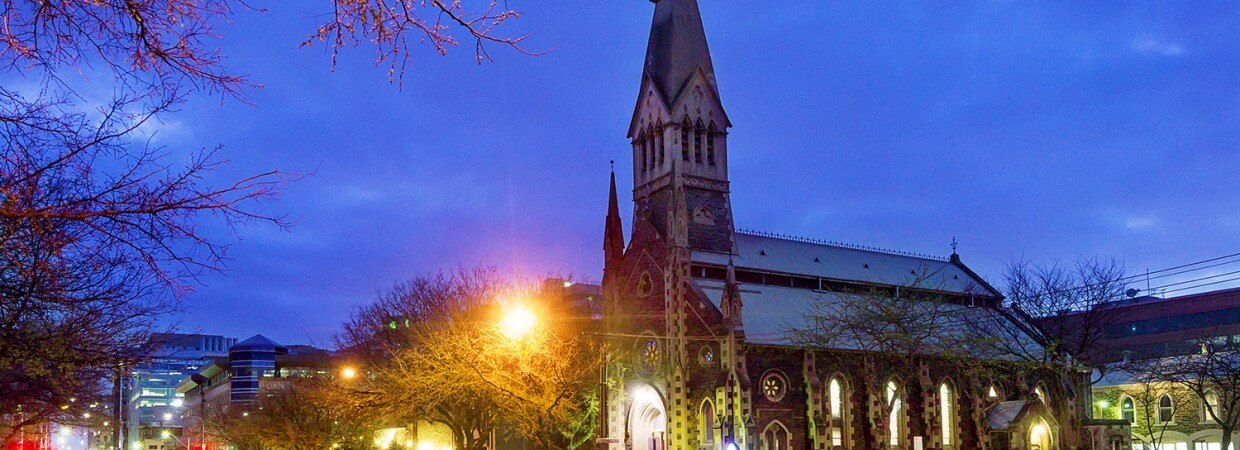
Remember your leaders, imitate their faith (Heb.13,7).
Do you recognise the man in this stained glass window? For many years Christian Gottlob Teichelmann’s photo has headed Bethlehem’s pastors’ portrait gallery on the Bethlehem House landing, though I imagine few of us could put a name to the face. But after just two years, Teichelmann’s face is now surely familiar to worshippers in St Mary’s Church in his home town of Dahme, where this window flanks the pulpit.
180 years ago on the 4th of November 1838 Missionary Teichelmann conducted the first Lutheran service on South Australian soil, in the timber and thatch chapel built by Congregationalist pastor Thomas Quinton Stow in the pioneer Adelaide settlement that straggled along the Torrens River. Although Teichelmann was never pastor of Bethlehem Congregation, he has been remembered as a fore-runner of the pastors who have served the congregation since its foundation in 1860. Together with Missionary Clamor Schürmann he conducted services for the handful of Lutheran settlers in the city who did not trek out the three miles along the Torrens to worship with Kavel’s congregation at Klemzig after their arrival and settlement later in 1838. Then in 1849 – after the closure of the Dresden Mission’s activity here – Teichelmann and Missionary Samuel Klose established Bethlehem’s predecessor congregation and its Trinity Church in Angas Street, commemorated by Bethlehem with a plaque on the WEA building. When Bethlehem Congregation resolved in 1871 to build the church we now worship in, it was Teichelmann – because he spoke better English than the other pastors of the synod – who conducted the customary English afternoon services for the foundation stone laying and the dedication, before retiring to farming life at Stansbury on Yorke Peninsula.
180 years after Teichelmann’s first service, another pastor from Dahme in the Mark Brandenburg – about 100 kilometres south of Berlin – will likewise preach to German Lutherans in Adelaide on 4 November, in the German service at Immanuel, North Adelaide. That date may be a happy coincidence, but Pastor Carsten Rostalsky is visiting South Australia to follow in Teichelmann’s footsteps and encounter his descendants and the descendants of the people to whom he ministered. Until 2011 when a small Aboriginal delegation from Adelaide visited Germany for the 175th anniversary of the Dresden Mission Society, no-one in Dahme even recalled the name of Teichelmann, let alone the story of his mission work in Australia. The Dahme congregation was however deeply moved by the story they heard of the ‘invaluable blessing’ of the Dresden missionaries’ work: the dictionaries and grammars compiled by them in order to preach the Gospel to Aboriginal peoples in their heart language now foster the identity of those peoples by enabling them to rediscover their own language and culture.
Immediately after the visit by that delegation, a major restoration project began at St Mary’s Church following decades of neglect under East Germany’s Socialist regime. In the process the congregation decided to restore more light to the building by re-opening the two bricked-in stained glass windows, but when they found that the figures of St Peter and St Paul actually bore the features of the last two German Emperors, they were not so sure. In the end the windows were transformed to represent two significant messengers of the Gospel from their own history: Georg Buchholzer, who as a friend of Martin Luther and Philipp Melanchthon preached the first ‘evangelical’ sermon in Berlin and became the founding president of their regional church in the Reformation; and Christian Gottlob Teichelmann who, following Luther’s precept of preaching and teaching n the language of the people, proclaimed that Gospel in Australia in German, English and Kaurna.


